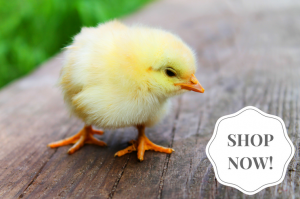
The first stop in a chicken’s digestive process is the crop, a pouch at the base of the neck that temporarily stores whatever the chicken has eaten. From there, food moves into the proventriculus (the chicken’s stomach), where acid and enzymes break it down for digestion. Crop impaction occurs when the crop gets jam-packed full to the point that its muscles cannot contract to move food along. Crop impaction in chickens is also called impacted crop or crop binding.
Signs of Crop Impaction
Along with an enlarged firm-feeling crop, signs of crop impaction include lethargy, loss of appetite, increased thirst, fewer and smaller droppings, tossing the head from side to side, and breathing with the mouth open.
The swollen crop prevents nutrition from getting through, eventually starving the bird to death. Or the crop can swell so large it cuts off the windpipe, suffocating the bird.
A chicken that is losing weight yet has a full crop that feels hard when you press it with your fingers likely is suffering from crop impaction. To verify your suspicion, isolate the chicken from feed overnight. In the morning a normal (not impacted) crop should be empty.
Causes of Crop Impaction
Impaction typically occurs when tough fibers wrap together to form a mass too large to move beyond the crop. It may happen when chickens have access to long pieces of cut grass, or when birds free-range where forage consists of tall grass and other tough, fibrous vegetation. Mow pasture often enough to keep plants tender and succulent.
A crop may become packed with bedding if nutritious rations are not available, causing the bird to be hungry enough to eat inappropriate matter. Hay bale twine, string from feed sacks, and plastic strips shredded from feed sacks are other potential causes of impaction. Even consumed feathers can cause impaction.
Impaction may also occur when feed is withheld prior to deworming, causing chickens to gobble down too much afterward. When the chicken takes a drink, the dry feed swells in the crop. Offering a moistened ration after deworming will prevent hard, dry feed from jamming up in the crop. Any illness, especially Marek’s disease, that interferes with the crop’s muscle contractions can also result in impaction.
Treating Crop Impaction
Once you have verified that the crop is impacted, you can sometimes relieve the congestion by gently massaging the crop. To soften the crop’s contents, let the chicken swallow a few drops of warm water or vegetable oil, then gently massage. Repeat as necessary. If that doesn’t work, a vet can surgically remove the fibrous mass from the crop.
But before jumping to the conclusion that your chicken’s crop is impacted, just because the crop seems swollen, first ascertain that the bird has not recently eaten. A normal crop will be empty between two and four hours after the last time a chicken eats.
And that’s today’s news from the Cackle Coop.
Gail Damerow is the author of Storey’s Guide to Raising Chickens, source of the above illustration.

